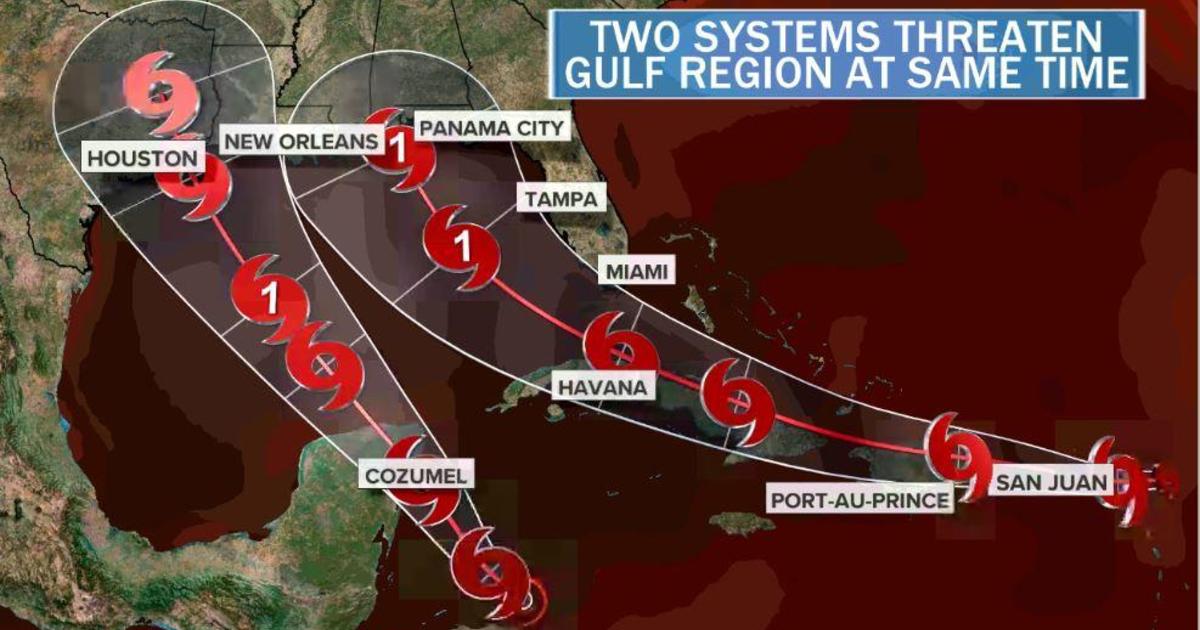News
Postal Service “fully capable” of delivering election mail on time, DeJoy says
Golden State Killer sentenced to life in prison
Barr says he would be “vehemently opposed” to pardoning Snowden
Two tropical systems could threaten Gulf Coast
Russia to let opposition leader in coma fly to Berlin for treatment
Ex-SEAL involved in bin Laden raid banned from Delta
California wildfires kill at least 5, force thousands to evacuate
Pence says DNC speeches presented “a grim vision for America”
Lori Loughlin’s husband gets 5 months in prison
2020 Elections
Battleground Tracker: Latest polls, state of the race and more
5 things to know about CBS News’ 2020 Battleground Tracker
2020 DNC Night 2: Live updates
Michelle Obama closes out DNC first night with emotional speech
With more mail-in ballots, officials urge patience on election night
Americans and the right to vote: Why it’s not easy for everyone
Democrats are happy with Biden’s VP pick: CBS News poll
Why some mail-in ballots are rejected and how to make sure your vote counts
What happens if the president doesn’t accept the election results?
Election Day could turn into “Election Week” with rise in mail ballots
Shows
CBS This Morning
CBS Evening News
60 Minutes
CBS This Morning: Saturday
Face The Nation
Sunday Morning
48 Hours
CBSN Originals
NCIS: The Cases They Can’t Forget
Live
LIVE
More
Search
Live
Watch CBSN Live
On Friday morning, hurricane hunters flying east of Puerto Rico to investigate Tropical Depression 13 found the system has now strengthened enough to be designated Tropical Storm Laura. And, in a major development, the center of the system has reformed much further south, which changes its likely track as it approaches the United States.
Meanwhile, Tropical Depression 14 continues to churn just off the coast of Honduras in the western Caribbean. It is forecast to become Tropical Storm Marco later today as it moves northwest towards the Gulf of Mexico.
Both of these systems are forecast to impact the northern Gulf Coast of the U.S. next week, likely within a day of each other, complicating an emergency response already stretched thin by coronavirus.
Tropical Storm Laura is currently located southeast of Puerto Rico with winds of 40- 50 mph and is moving briskly to the west-northwest at 18 mph. The latest computer models and the National Hurricane Center show Laura likely to move near or over the Greater Antilles islands of Puerto Rico, Hispaniola and Cuba.
This would lessen the threat to South Florida on Monday, as now it appears the system may move south of the state, but it’s too early to say for sure. The Florida Keys are still in the forecast cone.
Interesting development Friday AM. Hur hunters find actual center well south of estimated center. This means TD #13 may be starting its trek toward the west aiming right at the disruptive islands of the Caribbean. Old model run near/north of islands, new run closer to islands. pic.twitter.com/kzt4mAkSbc
— Craig Setzer, CCM (@CraigSetzer) August 21, 2020
If the storm moves over the islands, more interaction with hostile terrain would make it harder for the system to get stronger. However, that also means flooding rains are more likely in the islands.
And the track further to the south means that any landfall on the northern Gulf of Mexico coast would be delayed by a day, giving the system extra time to strengthen once it reaches the above-average sea surface temperatures of the Gulf.
As of now, the official forecast from the National Hurricane Center brings the center of the track to the northeastern Gulf Coast — from Louisiana to the Florida Panhandle — by Wednesday, perhaps as a hurricane.
The intensity will depend on if it survives the trek across the islands intact and how much it can intensify when it enters the Gulf. As you can see below, the intensity forecast from various models ranges from a weak tropical wave to a major hurricane.
Tropical Depression 14, which would be named Marco, also poses a threat to the Gulf Coast, but further west and likely a day ahead of Laura.
The official forecast from the National Hurricane Center calls for Marco to briefly strengthen to a hurricane in the Gulf of Mexico Monday, before weakening a little before landfall due to wind shear. Landfall is currently forecast to come anywhere from the central Texas coast to the western Louisiana coast on Tuesday, as a tropical storm.
The question often arises of what happens when you have two tropical systems right next to each other. Can they merge? The answer is no. To the contrary, they act to inhibit each other because each one has sinking air on its outskirts, which weakens the other storm. Typically the larger storm will weaken the smaller one.
But there is another effect which is getting lots of attention on social media called the Fujiwhara affect. When storms get close to each other they can engage in a dance of sorts, orbiting around a common center.
We know one storm will likely become dominant. We shouldn't rule out future Marco.
Yes, it could run into shear first. But with possible Fujiwhara, there is a scenario where Marco's NW progress could be stalled, allowing it to intensify more while Laura saturates column north. pic.twitter.com/mQdnCLeuMK
— Matthew Cappucci (@MatthewCappucci) August 21, 2020
While interesting, it poses a huge challenge to forecasters and can impact where the storms eventually make landfall. Whether this occurs has a lot to do with the timing and size of each system, and that remains to be seen.
The bottom line is that the forecast at this point remains uncertain. With many potential outcomes still on the table, the best advice is to get prepared now if you live in the Florida Keys or along the Gulf Coast.
Be in the know. Get the latest breaking news delivered straight to your inbox.
View CBS News In
CBS News App
Safari
